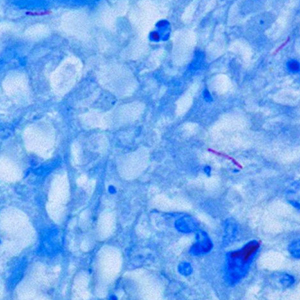Role of IP-10 during follow up of pulmonary tuberculosis patients

Submitted: July 20, 2021
Accepted: December 21, 2021
Published: January 27, 2022
Accepted: December 21, 2021
Abstract Views: 1304
PDF: 640
Publisher's note
All claims expressed in this article are solely those of the authors and do not necessarily represent those of their affiliated organizations, or those of the publisher, the editors and the reviewers. Any product that may be evaluated in this article or claim that may be made by its manufacturer is not guaranteed or endorsed by the publisher.
All claims expressed in this article are solely those of the authors and do not necessarily represent those of their affiliated organizations, or those of the publisher, the editors and the reviewers. Any product that may be evaluated in this article or claim that may be made by its manufacturer is not guaranteed or endorsed by the publisher.
Similar Articles
- Muhammed Kurt, Udo Boeken, Jens Litmathe, Peter Feindt, Emmeran Gams, Oxygenation failure after cardiac surgery: early re-intubation versus treatment by nasal continuous positive airway pressure (NCPAP) or non-invasive positive pressure ventilation (NPPV) , Monaldi Archives for Chest Disease: Vol. 70 No. 2 (2008): Cardiac series
- Letizia da Vico, Barbara Biffi, Maria Luisa Masini, Francesco Fattirolli, Nutritional care in the cardiac rehabilitation program , Monaldi Archives for Chest Disease: Vol. 68 No. 2 (2007): Cardiac series
- G. Caramori, G. Bettoncelli, M. Carone, R. Tosatto, P. Di Blasi, A. Pieretto, G. Invernizzi, B. Franco Novelletto, A. Ciaccia, I.M. Adcock, A. Papi, Degree of control of physiciandiagnosed asthma and COPD in Italy , Monaldi Archives for Chest Disease: Vol. 67 No. 1 (2007): Pulmonary series
- T. Kinnunen, O. Säynäjäkangas, T. Keistinen, Features of hospitalisations for acute exacerbation of COPD resulting in death , Monaldi Archives for Chest Disease: Vol. 67 No. 1 (2007): Pulmonary series
- G. Garuti, M. Lusuardi, Respiratory home care: take the pulmonary specialist out of the hospital! , Monaldi Archives for Chest Disease: Vol. 71 No. 3 (2009): Pulmonary series
- Filippo M. Sarullo, Luigi Americo, Salvatore Accardo, Sergio Cicero, Rossella Schicchi, Maria Schirò, Antonio Castello, Tako-tsubo cardiomyopathy observed in a patient with sepsis and transient hyperthyroidism , Monaldi Archives for Chest Disease: Vol. 72 No. 1 (2009): Cardiac series
- P. Carratù, G. Karageorgiou, P. Bonfitto, G. Di Gioia, D. Lacedonia, M.P. Foschino Barbaro, O. Resta, Long term evaluation of mental fatigue by Maastricht Questionnaire in patients with OSAS treated with CPAP , Monaldi Archives for Chest Disease: Vol. 67 No. 1 (2007): Pulmonary series
- Gabriella Malfatto, Paola Cuoccio, Caterina Bizzi, Giovanna Branzi, Alessandra Villani, Francesco Della Rosa, Gianfranco Parati, Mario Facchini, What underlies NYHA class in elderly patients with heart failure? role of diastolic dysfunction, functional mitral regurgitation and abnormal ventilation during exercise , Monaldi Archives for Chest Disease: Vol. 72 No. 2 (2009): Cardiac series
- Giorgio E. Polistina, Francesca Simioli, Pasquale Imitazione, Maurizia Lanza, Anna Annunziata, Giuseppe Fiorentino, Different presentation of pulmonary parenchymal disruption in COVID-19 pneumonia. Case series of Sub-Intensive Care Unit in Naples, Italy , Monaldi Archives for Chest Disease: Vol. 90 No. 4 (2020)
- Irineu Gregnanin Pedron, Comments on “Review of the association between periodontitis and chronic obstructive pulmonary disease in smokers†, Monaldi Archives for Chest Disease: Vol. 89 No. 3 (2019)
<< < 53 54 55 56 57 58 59 60 61 62 > >>
You may also start an advanced similarity search for this article.

 https://doi.org/10.4081/monaldi.2022.2022
https://doi.org/10.4081/monaldi.2022.2022





